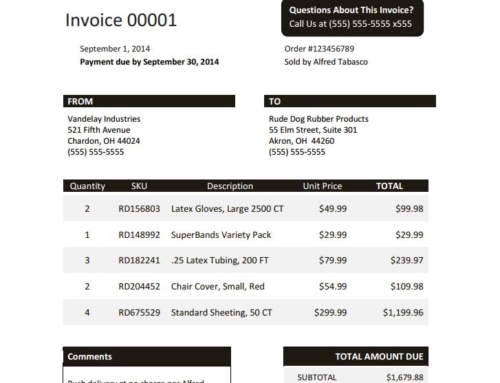As year-end approaches, the pressure is on for accounting departments, especially those involved in collecting outstanding invoices and pull in as much revenue as possible before closing the books. This is a frustrating task that can be completely overwhelming unless a methodical and standardized approach is put in place. We’ve developed a 28 step accounts receivable process to help you stay organized and make sure you’re not leaving any money on the table this year.
1. Start making calls in November on open invoices to ensure that those due before year-end will be paid on time. It’s best to pull in as much revenue as possible before year-end to reduce your workload when trying to close out the fiscal year.
2. Establish a date and time for period-end shipping/receiving and transaction posting.
3. Back-up A/R files using a reliable backup system prior to year-end close.
4. Verify all Sales have been posted.
5. Compare posted sales orders with open invoices to ensure that all sales orders have been invoiced and to finalize any outstanding unbillable revenue to date.
6. Review all unbilled shipments and services to ensure that all invoices have been sent for open and completed services, projects, or recent shipments.
7. Ensure that all cash receipts have been recorded for the current year.
8. Verify that all required adjustments to customer accounts have been made.
9. Apply finance charges to past due customers.
10. Verify that all sales tax adjustments have been posted and close out the tax year
11. Apply unapplied credits to customer accounts.
12. Print and send any outstanding invoices
13. Post all open journals.
14. Print and save a year-end aged invoice report, accounts receivable trial balance, and other reports in detail. Verify that the AR Trial Balance matches the accounts receivable account balance on the G/L Trial Balance.
15. Print, save, and review sales reports including: Annual Sales by Customer, Annual Sales by Sales Rep, Annual Cash Receipt Report, Sales Rep Commission Report, Invoice Registers, Taxable/Exempt Sales Reports, and Open Invoices Report.
16. Make Adjusting Entries for: bad debt write-offs expense account, outstanding receivables, sales commissions, and mis-coded invoices or cash receipts.
17. Identify bad debt to be factored or sent to third party collections.
18. Review returns to ensure credit and invoice accuracy.
19. Review prepaid deposits received from clients have been adjusted to earned revenue accounts.
20. Review pending cash receipts from credit card merchant service providers.
21. Make final corrections prior to sending year-end statements for customers
22. Complete Period-End Processing
23. Back-up A/R files using a reliable backup system after year-end close
24. Ensure you have paper and data backups before purging any records from your ERP system.
25. If you have consolidated financial reports across separate businesses – ensure that all of the previous steps have been completed for each company before finalizing your consolidated financial statements.
26. Prepare any and all information that may be required for CPA review or for IRS audits.
27. Prepare Fiscal Year End A/R Summary
The 28th and final step is to create your new fiscal year A/R plan. This plan can have a dramatic impact on the overall financial health of your business. It provides a documented roadmap that aligns corporate goals with business procedures. The credit plan should help your organization accomplish many goals, including reduction in bad debt and write-offs, as well as improvements in sales to cash payment cycles and improved profitability.




